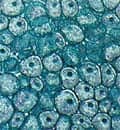According to Medpage Today, lower platelet reactivity among cigarette smokers using Plavix was not actually a sign of enhanced drug response but confounding by hemoglobin levels.
As in subanalyses of the large clinical trials suggesting the antithrombotic protection offered by the drug was limited to smokers — dubbed the smoker’s paradox — smokers had lower platelet reactivity measured by the P2Y12 reaction unit (PRU; 212.2 versus 230.1, P<0.001).
Smokers also had higher hemoglobin levels (14.4 versus 13.5 for non-smokers, P<0.001), Jung-Won Suh, MD, of Seoul National University Bundang Hospital in Korea, and colleagues reported online in JACC: Cardiovascular Interventions.
PRU levels were inversely correlated with hemoglobin levels (r=-0.389, P<0.001), regardless of smoking status.
After taking into account that relationship between hemoglobin and PRU, there was no longer any difference in PRU between smokers and non-smokers (225.3 versus 224.1, P=0.813).
“Because PRU, hemoglobin, and smoking status are closely associated, hemoglobin should be considered as a covariate when evaluating the influence of smoking on clopidogrel responsiveness. To the best of our knowledge, this is the first study that took hemoglobin level into account before defining the relationship between smoking status and clopidogrel responsiveness.”









